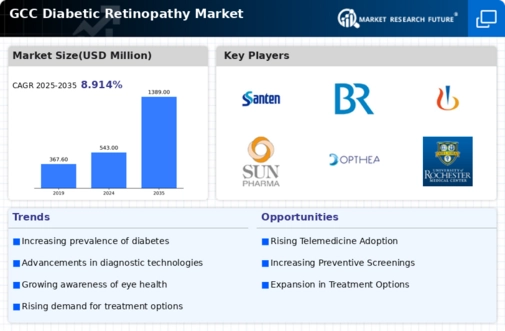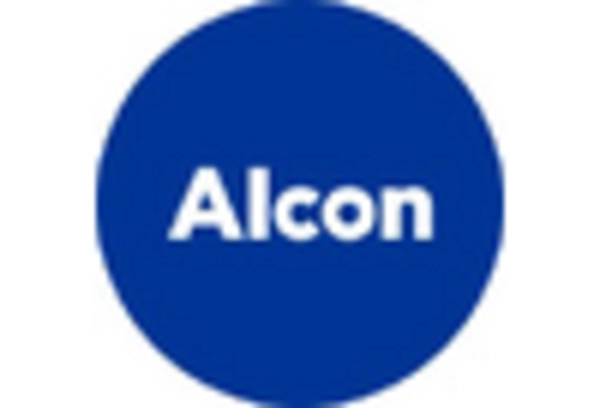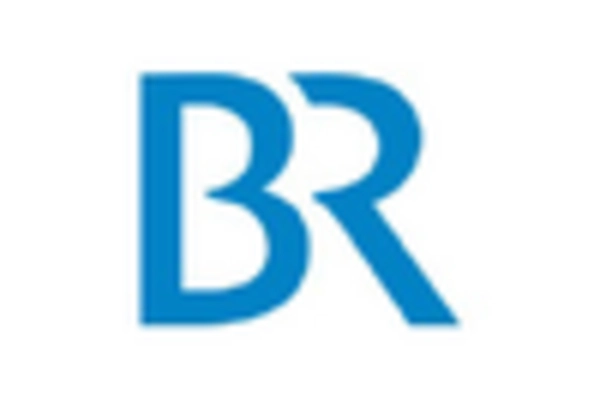Emerging Treatment Options
The diabetic retinopathy market is poised for growth due to the emergence of new treatment options. Recent developments in pharmacotherapy, including anti-VEGF (vascular endothelial growth factor) agents and corticosteroids, have shown promise in managing diabetic retinopathy. These innovative treatments are designed to halt disease progression and improve visual outcomes for patients. In the GCC, the introduction of these therapies is likely to enhance treatment protocols and patient care. As healthcare professionals become more familiar with these options, the adoption rate is expected to increase, thereby expanding the diabetic retinopathy market. Furthermore, ongoing research and clinical trials may lead to the discovery of even more effective treatments, further driving market dynamics.
Rising Healthcare Expenditure
The diabetic retinopathy market is positively impacted by the rising healthcare expenditure in the GCC region. Governments and private sectors are allocating more funds towards healthcare services, which includes the management of chronic diseases like diabetes and its complications. In recent years, healthcare spending in the GCC has seen a notable increase, with estimates suggesting a growth rate of around 5% annually. This financial commitment enables the development and accessibility of advanced treatment options for diabetic retinopathy. As healthcare systems evolve, the availability of specialized services and therapies is expected to expand, thereby fostering growth in the diabetic retinopathy market. Enhanced funding also supports public health initiatives aimed at raising awareness about the importance of eye health among diabetic patients.
Growing Awareness of Eye Health
The diabetic retinopathy market is benefiting from the growing awareness of eye health among the diabetic population. Educational campaigns and community outreach programs in the GCC are increasingly emphasizing the importance of regular eye examinations for individuals with diabetes. This heightened awareness is likely to lead to earlier detection and treatment of diabetic retinopathy, which can significantly reduce the risk of vision loss. As more patients understand the potential complications associated with diabetes, they are more inclined to seek regular screenings and follow-up care. Consequently, this trend is expected to drive demand for services and products within the diabetic retinopathy market, as healthcare providers respond to the increasing need for preventive measures and effective management strategies.
Advancements in Diagnostic Technologies
The diabetic retinopathy market is significantly influenced by advancements in diagnostic technologies. Innovations such as optical coherence tomography (OCT) and fundus photography have enhanced the ability to detect diabetic retinopathy at earlier stages. These technologies allow for non-invasive imaging and detailed analysis of retinal structures, which is crucial for timely intervention. In the GCC, the adoption of these advanced diagnostic tools is on the rise, with healthcare facilities investing in state-of-the-art equipment. This trend not only improves patient outcomes but also increases the overall efficiency of healthcare systems. As a result, the diabetic retinopathy market is likely to benefit from the growing emphasis on early diagnosis and monitoring, leading to increased treatment uptake.
Increasing Incidence of Diabetic Retinopathy
The diabetic retinopathy market is experiencing growth due to the rising incidence of diabetic retinopathy among individuals with diabetes. In the GCC region, studies indicate that approximately 30% of patients with diabetes develop some form of diabetic retinopathy. This alarming statistic underscores the urgent need for effective screening and treatment options. As the population ages and lifestyle-related diabetes cases increase, the prevalence of diabetic retinopathy is likely to rise. Consequently, healthcare providers are focusing on early detection and management strategies, which may drive demand for innovative therapies and diagnostic tools in the diabetic retinopathy market. The increasing burden of this condition necessitates a comprehensive approach to eye care, thereby propelling market growth.

















Leave a Comment